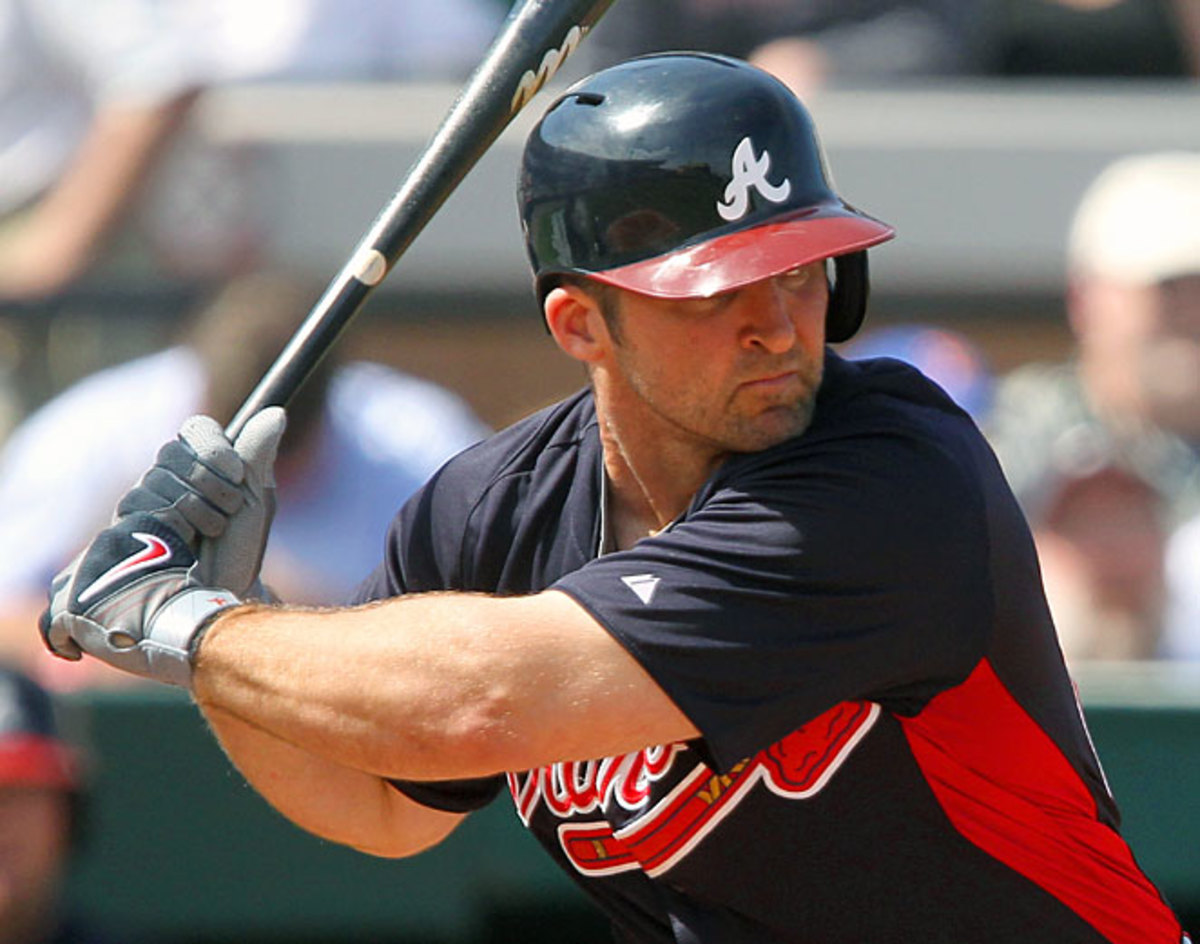Players divided as new helmets become mandatory


Until this season, almost no hitter was wearing an adequate helmet, unless Tim Wakefield was on the mound. Before Major League Baseball mandated a new helmet for all players this season -- one capable of preventing injury on fastballs up to 100 miles per hour -- the old one was only certified for speeds up to 68 mph, or about the speed of a Wakefield knuckleball. (But not R.A. Dickey's knuckler, which averaged 78 mph last year.)
And unlike the giant headgear David Wright infamously wore in 2009, an oversized helmet reminiscent of the movieSpaceballs, this new Rawlings creation is only six percent larger and eight percent heavier.
In fact, the increase in weight was just 1.3 ounces, from 16.7 to 18.0, equivalent to the heft (or lack thereof) from a stack of six quarters. Rawlings made the new helmets -- the S100 Pro Comp, with a carbon-fiber composite shell -- available to players in spring training last season. Some 200 players, including Giants catcher Buster Posey, wore them for part or all of the season, according to the league.
This year, all players will wear them, though not every player is enthusiastic about the change.
The Braves' Dan Uggla, who was hit in the left ear flap last July 25 by the Marlins' Chad Gaudin but stayed in the game, said, "I got hit in the head with a 92, 93 mile-an-hour fastball last year, and I was fine. [The old helmets] are lighter, they're more comfortable. These [new] ones -- they're okay. They made a lot of modifications to them from when they first came out with it. . . . They're not too bad. I'm getting used to it. I guess they are proven to be safer, so that's a good thing.
"Obviously if they would let us choose, I would wear the old one. But like I said, this one's not too bad. It's growing on me."
Others, though, not only are in favor of it but consider it an obvious decision.
"It's like the difference between wearing a seat belt and not wearing a seat belt," said Padres catcher John Baker, who wore the new model last year when it was optional. "That's how I looked at it. It was a very common sense issue. 'Hey, this helmet's better. It feels the same as the other one. Do you want to use the other one?' It doesn't make any sense to me to not switch."
Based on laboratory tests in which cannons fire baseballs at helmets from close range, the new helmet reduces the energy from the impact of a 100 mph fastball by 75 percent over the old helmet, said Art Chou, the Rawlings senior vice president of product. The larger model from a few years ago, which remains mandatory in the minor leagues, protected up to 100 mph because of a thicker interior; the new helmet works because the exterior shell was re-designed.
"No helmet or piece of head protection is concussion-proof," Chou said. "For us it's about mitigating the energy that your head feels."
For players, it's also about not sacrificing performance for safety. Unlike Rawlings' universally panned high-speed-protecting predecessor -- i.e. the one Wright wore, which he said shifted around as he ran the bases -- this one is less likely to make much, if any, impact on performance.
Several players asked about the new helmets quickly noted the extra weight -- ballplayers are creatures of habit, after all. As often as hitters wear them, they're sure to notice subtle changes at least at first; many can detect even a fraction of an ounce of deviation in weight from their standard bats. Baker, however, said he got used to the new helmet within three days last year.
"After I get used to it, I probably won't even worry about the other ones and will go with the flow and just keep using it," Rockies catcher Yorvit Torrealba said. "Right now they feel a little bit heavier and they just look weird, that's all."
Rawlings presented the first prototype of the S100 Pro Comp to the league and union during the 2011 All-Star break, which was fortuitous timing as it allowed them to write the new helmet requirement into the collective bargaining agreement that was negotiated that fall. It costs three times as much as the old helmet, with clubs covering that expense.
Their importance was reinforced on the day MLB announced the new mandatory helmets, when the Marlins' Giancarlo Stanton was hit in the head by a teammate -- the club's top pitching prospect, Jose Fernandez, no less -- during a simulated game. Stanton was wearing the new helmet but the ball struck just below it, on the neck; he checked out O.K.
Two weeks later, Uggla was also hit in the neck by a pitch from the Yankees' Branden Pinder, though he escaped relatively unscathed.
Amidst a rising awareness of the dangers of concussions and other brain injuries, this new helmet makes great strides in protecting players. Cap liners for pitchers are in the research and development stage.
"It's part of our job and part of the Players Association's job to make sure that we're up to date on the latest research into player safety and the latest devices and protective gear that are available to players," Dan Halem, MLB's senior vice president of labor relations, said. "We try our best to stay ahead of the curve."
The league and union should be applauded for this step: on this subject, substance trumps style.
"It's all about protection -- that's always good," says Torrealba. "There are a lot of good arms in the big leagues, young guys that try to be too fine sometimes and the ball slips out of his hand. The last thing we want is a pitcher almost killing a hitter or anything like that."
